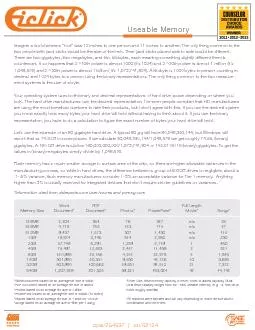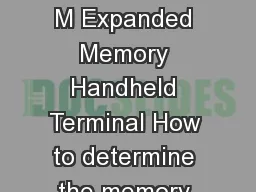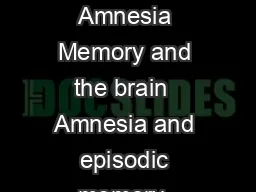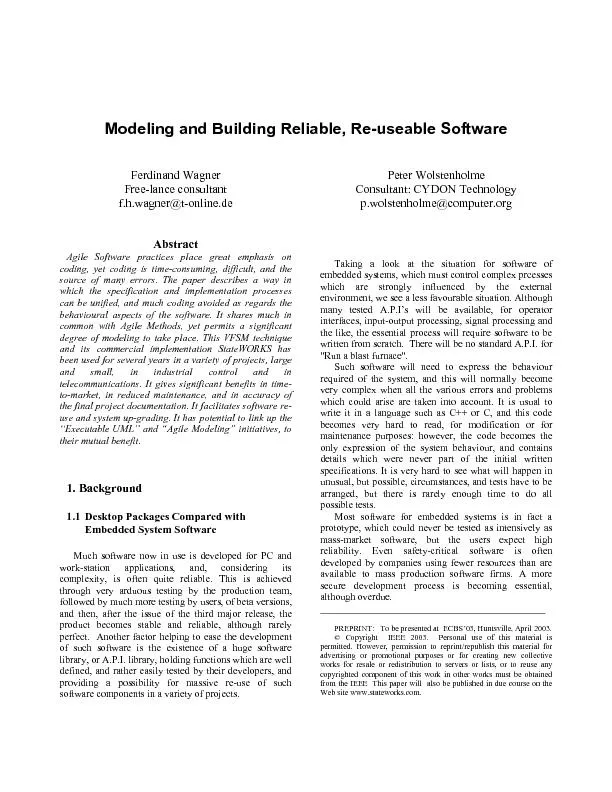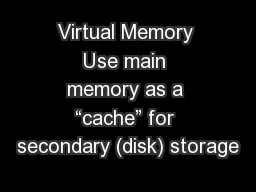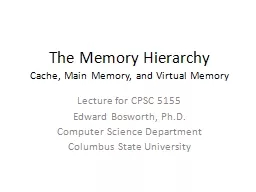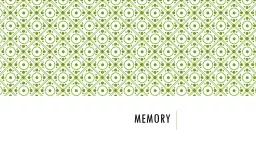PDF-Useable Memory
Author : briana-ranney | Published Date : 2015-11-30
WordWord Document based on an average file size of 50kbNote USB drive memory capactiy is never 100 of stated capacity Most USB drive capacity ranges from 90 98
Presentation Embed Code
Download Presentation
Download Presentation The PPT/PDF document "Useable Memory" is the property of its rightful owner. Permission is granted to download and print the materials on this website for personal, non-commercial use only, and to display it on your personal computer provided you do not modify the materials and that you retain all copyright notices contained in the materials. By downloading content from our website, you accept the terms of this agreement.
Useable Memory: Transcript
Download Rules Of Document
"Useable Memory"The content belongs to its owner. You may download and print it for personal use, without modification, and keep all copyright notices. By downloading, you agree to these terms.
Related Documents

